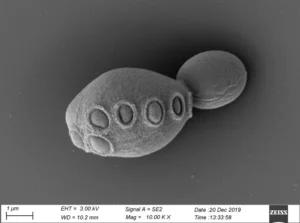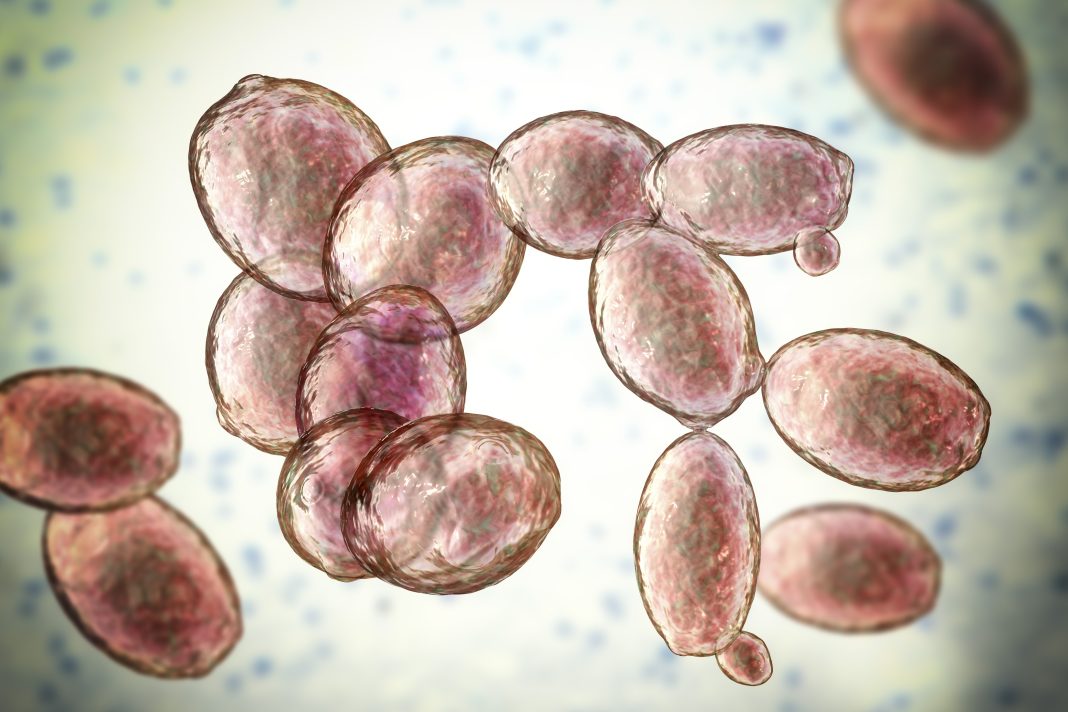A collection of papers published in Cell and Cell Genomics describes the activities of an international research consortium working on synthesizing the first fully synthetic eukaryotic genome using Saccharomyces cerevisiae, or common baker’s yeast, as a model. The publications are the work of the Synthetic Yeast Genome project (Sc2.0), an international collective of scientists that have embarked on the ambitious bioengineering project.
To date, Sc2.0 scientists have successfully synthesized and debugged all 16 native S. cerevisiae chromosomes. They have now combined over seven of these synthetic chromosomes into a single yeast cell resulting in a strain with more than 50% synthetic DNA that survives and replicates much like wild-type yeast. The partly synthetic yeast is described in more detail in Cell in a paper titled “Debugging and consolidating multiple synthetic chromosomes reveals combinatorial genetic interactions.”

With that goal in mind, during the synthesis process the researchers removed chunks of noncoding DNA and repetitive elements, and added new snippets of DNA to help them more easily distinguish between synthesized and native genes. They also introduced a built-in diversity generator called “SCRaMbLE” that shuffles the order of genes within and between chromosomes. Details of the diversity generator are provided in a separate paper published in Cell Genomics titled, “Dissecting aneuploidy phenotypes by constructing Sc2.0 chromosome VII and SCRaMbLEing synthetic disomic yeast.”
Since the yeast genome is organized into sixteen chromosomes, the researchers first assembled each one independently to create sixteen partially synthetic yeast strains that each contain 15 natural chromosomes and one synthetic chromosome. To combine these synthetic chromosomes into a single yeast cell, Boeke’s team essentially interbred different partially synthetic yeast strains and then searched their progeny for individuals carrying both synthetic chromosomes.
Gradually they consolidated all previously synthesized chromosomes—six full chromosomes and one chromosome arm—into a single cell. The resulting yeast strain was more than 31% synthetic, had normal morphology, and showed only slight growth defects compared to wild-type yeast. As part of the consolidation process, the researchers also identified and fixed several genetic defects and increased the yeast’s fitness using CRISPR/Cas9 editing.
To efficiently transfer specific chromosomes between yeast strains, the researchers developed a method called chromosome substitution that is discussed in another paper in the collection. The method is discussed in a Cell Genomics paper titled, “Consequences of a telomerase-related fitness defect and chromosome substitution technology in yeast synIX strains.” As a proof of concept, the team used chromosome substitution to transfer the largest of the newly synthesized chromosomes, resulting in a yeast cell with 7.5 synthetic chromosomes that is more than 50% synthetic.
The researchers also took steps to increase the stability of the genome by creating an entirely new chromosome not found anywhere in nature called the tRNA neochromosome. This effort to create the first completely de novo synthetic chromosome was spearheaded by researchers at the Manchester Institute of Biotechnology at the University of Manchester.
The neochromosome was designed and manufactured using artificial intelligence, robotics, and techniques from metrology. Although it is synthetic, it includes features of typical eukaryotic chromosomes including a centromere, telomer, and origins of replication. It is used to house all 275 nuclear tRNA yeast genes, and these will eventually be added to the fully synthetic yeast. Details of the yeast neochromosome are described in a Cell paper titled, “Design, construction, and functional characterization of a tRNA neochromosome in yeast.”
Re-writing the yeast genome from scratch is more than just an interesting research exercise. Yeasts are a major workhorse of industrial biotechnology where they are routinely used to produce large quantities of valuable chemicals and bioproducts efficiently, economically, and sustainably. If this initiative is successful, scientists could conceivably engineer yeast strains that are more productive, faster, and more tolerant to harsh conditions. Additionally, working through the process of writing the genome is shedding light on fundamental questions regarding how genomes are organized and evolve.
Some of the broader context for the initiative and its implications for research and industrial uses powered by synthetic biology are discussed in a paper titled, “Rise of synthetic yeast: Charting courses to new applications” and another paper titled, “A spotlight on global collaboration in the Sc2.0 yeast consortium.”
The next step for the group is to integrate the remaining synthetic chromosomes. “Our motivation is to understand the first principles of genome fundamentals by building synthetic genomes,” Patrick Yizhi Cai, PhD, chair professor of synthetic genomics at the University of Manchester and senior author on two of the papers in the collection, noted. “The team has now re-written the operating system of the budding yeast, which opens up a new era of engineering biology—moving from tinkering a handful of genes to de novo design and construction of entire genomes.”
Equally impressive is the sheer scale of the collaboration involved in the project. It’s a “fascinating, highly interdisciplinary project” that “combines basic research to expand our understanding of genome fundamentals, but also paves the way for future applications in biotechnology and drives technology developments,” Daniel Schindler, PhD, one of the lead authors and group leader at the Max Planck Institute for Terrestrial Microbiology and the Center for Synthetic Microbiology, added.
The next step is to integrate the remaining synthetic chromosomes to make the full genome. “Now we’re just this far from the finish line of having all 16 chromosomes in a single cell,” Boeke said. “I like to call this the end of the beginning, not the beginning of the end, because that’s when we’re really going to be able to start shuffling that deck and producing yeast that can do things that we’ve never seen before.”


